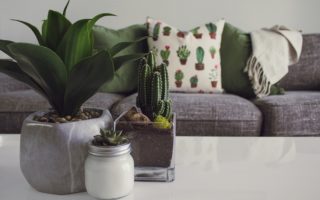The indoor plants are so intertwined in our world that it is already impossible to imagine an apartment or office without them. They ensure comfort and rejuvenation on the inside, delighting our healthy appearance and earning frustration. They can’t talk, so they don’t tell what they don’t like, but you can guess about the plant’s appearance, the condition of its leaves, bloom, or its absence.
- Most of our houseplants originate from humid or subtropical weather. In our apartments and houses, the air is fairly desiccated, particularly during the winter season, when heating arrangements are turned on. Excess moisture can be detected by dark spots on leaves and flowering shoots. Sometimes you may notice a fluffy grey coating in the places where leaf petioles are attached to the stock – this is grey rot. Moist flowers with thin leaves are particularly affected by a lack of moisture. This is understandable, as the plant supplies a good amount of dampness in a leaf plate, and the concentration is the additional strong presence.
Some symptoms can be considered inadequate humidity:
– The leaves turn yellow, then waterless;
– Flowers and buds fall;
– Leaves slender and turns yellow;
– The spider mite is seen on some plants;
It is necessary to try to increase any humidity in any way. If there is a humidifier that is outstanding, but if not,then it is essential to spray the plants every day with soft, stable water. In winter, it is preeminent to a group of flowers, and in unfastened tulles, air humidity will be somewhat higher. Particularly sensitive specimens can be placed on pebbles in trays with water.
2. If the heating battery is near the flowers, and there is no way to change the location, then there is a chance that houseplants may die and in that case, you should try to isolate the plants from the hot air – close the battery with a shield, blanket or any other material.
3. Sometimes the leaves of indoor plants turn black, and they die gradually. In this case, a large part of the plate edge will turn black sheets. You have to take measures to evaporate the air around the plant. Therefore, you need to know that you cannot flood the plant, and if this happens, you should do the following:
- Trim the dark leaves.
- Dry on 1/3 of the soil in which the flower is planted.
- Check that there is too much water leaking out of the pot.
- Then the frequency of the water decreased.
- Spray leaves of indoor plants from a spray bottle.
- Use a humidifier.
- Place the water tank next to the flower pot.
- Sometimes flowers of indoor plants turn yellow. This can be fixed by applying the following:-
- Apply the flower with diffused light.
- Trim sick leaves.
- Add the fertilizer to the plant. Well-proven complex fertilizer “Reasil”
5. Sometimes leaves of indoor plants get faded, and if this happens, you should do the following:
- Remove the indoor plant from the pot.
- Clean the roots of the old soil.
- Replant a flower in new soil, not forgetting the need to create good drainage.
Do check out our extensive range of houseplants that are available online and also in the shop.



